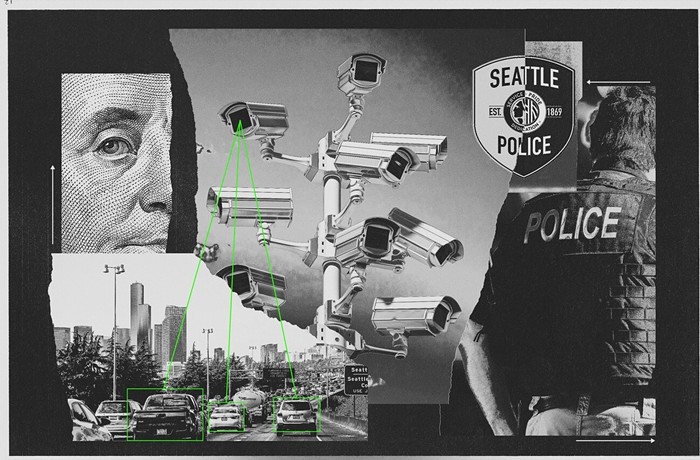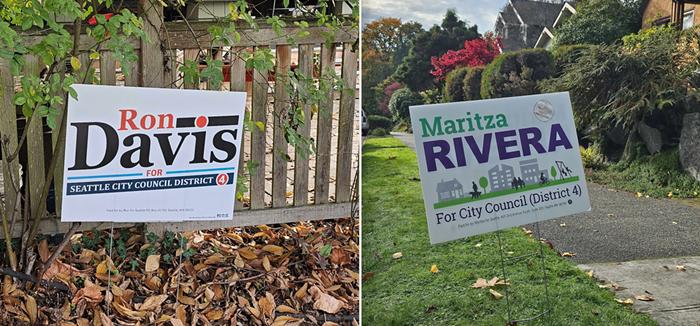
A new report shows just how much it takes to afford to live in Seattle, one of the hottest housing markets in the county: $24 an hour or about 87 hours of work per week at the current minimum wage.
Every year, the National Low Income Housing Coalition's "Out of Reach" report highlights the gap between wages and housing costs. And every year the results are dismal. According to to this year's report, released today, it remains difficult for many minimum wage workers across the country to afford a "modest and safe rental home" without spending more than 30 percent of their income on rent.
In the world of housing policy, spending no more than 30 percent of income on housing is a standard definition of "affordable." But households are increasingly spending 50 percent or more of their income on housing, making them "severely cost-burdened." For rental costs, the NLIHC uses the Department of Housing and Urban Development's definition of fair market rent.
The minimum wage a Washington State resident would have to make to afford a one bedroom apartment is $18.88 an hour. At the current rate, they would have to work 69 hours a week. For a two-bedroom: $23.64 an hour or 86 hours a week at the current minimum wage. In the Seattle-Bellevue metropolitan area, those numbers jump to $24.02 an hour or 87 hours a week for a one-bedroom. To afford a two-bedroom apartment in Seattle, workers need to make $29.69 an hour or work at the minimum wage for 108 hours a week, according to the report.
It's worth remembering here just who makes the minimum wage. Minimum wage workers are older than they used to be. Half are older than 30. About a quarter have kids. Minimum wage workers are disproportionately women and people of color.
Seattle and Washington State have some of the highest minimum wages in the country, but the wages still aren't enough. Seattle's minimum wage is currently between $11 and $15, depending on the size of the business. Last fall, voters raised the statewide minimum wage to $11 this year and $13.50 by 2020. The gap in other cities and states is even worse. San Francisco is the most out-of-reach city in the country, according to the report. There, workers need to make $46.37 an hour to afford a one-bedroom. The minimum wage is $14.
So, what is the federal government doing about all this? Basically all the wrong things, according to the NLIHC's report:
While low income renters struggle to afford their homes, the largest share of federal housing expenditures benefit higher income homeowners in the form of deductions from their taxable income. Homeowners are eligible to subtract the interest paid on their mortgage and real estate taxes from their federal taxable income if they itemize their deductions rather than claim the standard deduction. These two deductions combined cost the federal government nearly $100 billion annually, more than 83% of which benefits homeowners with incomes greater than $100,000 (Joint Committee on Taxation, 2017). The mortgage interest deduction (MID) alone costs $65 billion to assist higher income homeowners, most of whom would be stably housed without the government’s help.
While the NLIHC notes increasing supply is important for addressing this problem (build. more. housing.), the report also acknowledges that the free market may never take care of those at the bottom.
"An extremely low income household cannot afford the average rent for a modest one-bedroom apartment in any state," the group writes in its report. "The struggle is even more daunting for the 5.5 million people with disabilities who rely on Supplemental Security Income (SSI). An individual relying on federal SSI in 2017 can afford monthly rent of no more than $221."
The authors add later: "In the private market, the poorest renters compete with higher income households for rental homes. Three and half million rental homes affordable to extremely low income households are unavailable to them because they are occupied by households of higher income... Absent public subsidy, the private market rarely produces new rental housing affordable to the lowest income households."
Seattle is on a path toward building more housing and requiring that some units be affordable for working class people. Without significantly more investment in housing for low-income people though, there is no sign the trends in the NLIHC's annual report will look any better come this time next year.
Read the full report here.


















